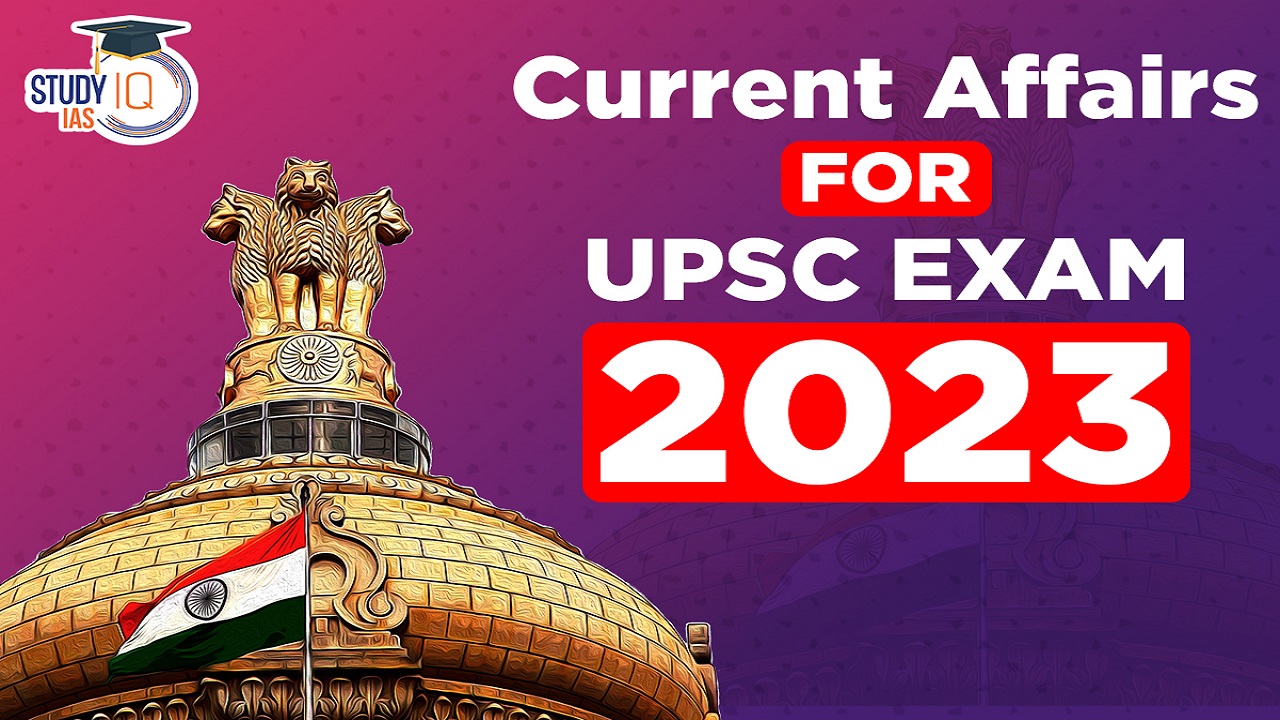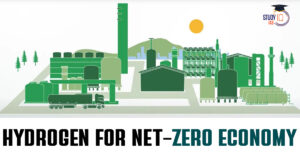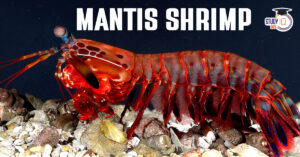Current Affairs 5th October 2023 for UPSC Prelims Exam
The Institution of Speaker, USA Vs India
Context: The Speaker of the United States House of Representatives, Kevin McCarthy, has been removed from his position, for the first time in the body’s 234-year history.
Understanding the Difference between Indian Government and US Government
| Characteristic | Indian Government | US Government |
| Form of Government | Parliamentary | Presidential |
| Head of State | President (constitutional head). The Indian President is elected indirectly for five years. | President (head of state and head of government). The people directly elect the President, and he/she is elected for four years. |
| Legislature | India has a bicameral legislature consisting of the Rajya Sabha (Council of States) and the Lok Sabha (House of the People). Members of the Rajya Sabha are indirectly elected, while members of the Lok Sabha are directly elected. | The United States has a bicameral legislature consisting of the Senate and the House of Representatives, both of which are directly elected by the people. |
| Political Parties | India has a multi-party system with several national and regional political parties. | The U.S. primarily has a two-party system dominated by the Democratic Party and the Republican Party. |
The Institution of Speaker in USA
- The Speaker of the House is the presiding officer of the U.S. House of Representatives.
- The Speaker is typically the leader of the majority party in the House and is elected at the beginning of each new Congress.
- Election: The Speaker of the United States House of Representatives is elected by members of the House. The process involves a formal vote by all House members, and the candidate who receives a majority of the votes becomes the Speaker.
- Removal: The Speaker of the House can be removed from their position through a vote of no confidence, which requires a majority vote of the House members.
Difference between the Institution of Speaker in India and USA
| Aspect | Speaker in India (Lok Sabha) | Speaker in USA (House of Representatives) |
| Position in Legislative Body | Presiding officer of Lok Sabha | Presiding officer of House of Representatives |
| Selection Process | Elected by Lok Sabha members | Elected by House of Representatives members |
| Removal Process | Vote of no confidence through majority vote | Vote of no confidence through majority vote |
| Role in Presidential Succession | No role in presidential succession | Second in presidential line of succession, following the Vice President. |
| Party Politics | Expected to be impartial | Prominent party leader, involved in politics |
Current Affairs 4th October 2023 for UPSC Prelims Exam
Glacial Lake Outburst Flood (GLOF), Teesta River, Lhonak Lake
Context: Several people died and went missing after South Lhonak Lake, a glacial lake in Sikkim, burst and overflowed into the Teesta River, creating a glacial lake outburst flood (GLOF).
About Glacial Lake Outburst Floods (GLOFs)
- ICIMOD or the International Centre for Integrated Mountain Development defines a GLOF as ‘the sudden release of water from a lake fed by glacier melt that has formed at the side, in front, within, beneath, or on the surface of a glacier’.

- Causes of GLOFs
- Structural failure: When glaciers start to melt, they can create glacial lakes. The water in these lakes can put pressure on the natural dam that holds the water in, causing it to fail.
- Earthquakes: Earthquakes can cause sudden changes in the shape and stability of a glacial lake and its dam, leading to a GLOF.
- Climate change: Rising temperatures and increased rainfall can lead to more meltwater and therefore more glacial lakes, as well as increase the risk of GLOFs.
- Human activities: Human activities, such as construction or mining, can cause changes in the area around a glacial lake that can lead to a GLOF.
- Impact: GLOF has the potential to catastrophically threaten people’s lives, livelihoods and regional infrastructure.
- The National Disaster Management Authority (NDMA) to tackle Glacial Bursts: Some of the key measures recommended by the NDMA include:
- Regular Risk assessment: to identify vulnerable areas and communities, and to prioritize areas for intervention.
- Early warning systems: to provide timely alerts to communities and authorities.
- Disaster management plans: which include evacuation plans, rescue and relief operations, and post-disaster rehabilitation.
- Capacity building: Building the capacity of local communities, authorities, and emergency responders to respond to GLOFs through training and awareness programs.
- Risk reduction measures: such as glacial lake stabilization to mitigate the risk posed by GLOFs.
Related Information
About the Teesta River

- It is a transboundary river that flows through the Indian states of Sikkim and West Bengal, and the country of Bangladesh.
- The Teesta River is a glacier-fed river.
- Originates from the Tso Lhamo Lake in the Pauhunri Mountain range of eastern Himalayas in Sikkim, India.
- Joins the Brahmaputra River in Bangladesh.
- Fourth-largest River in Bangladesh, and the largest river in Sikkim.
- Major tributaries: the Rangeet River, Lachen River, Lachung River, Rydak River, Jaldhaka River, and Torsha River.
About the Lhonak Lake

- It is a glacial lake located in the Lachen Valley of North Sikkim.
- Lhonak Lake is a moraine-dammed lake.
Important glacial lakes in India
| Glacial Lake | Location |
| Roopkund Lake | Uttarakhand, Chamoli district |
| Suraj Tal | Himachal Pradesh, Lahaul and Spiti district |
| Tsomgo Lake | Sikkim |
| Gurudongmar Lake | Sikkim, North Sikkim district |
| Tso Moriri Lake | Ladakh, Changthang plateau |
| Pangong Tso (Pangong Lake) | Ladakh, India-China border |
| Kedartal | Uttarakhand, near Gangotri Glacier |
Maa Danteshwari Temple
Context: The Prime Minister of India recently visited the Maa Danteshwari Temple in Bastar, Chhattisgarh.
Maa Danteshwari Temple
- Location: Danteshwari Temple is situated near the confluence of the Dankini and Shankhini rivers in Dantewada district, Chhattisgarh.
- Built by: The temple was built by the Chalukyas during the 14th Century.
- Deity: Danteshwari Temple is dedicated to Goddess Danteshwari.
- Features:
- It is one of the 52 Shakti Peethas as it is believed that the tooth of Mother Sati had fallen here.
- The idol of Goddess in the temple is made of black granite stone with hexagons.
- Festivals: Before Holi, a nine-day festival called Phalgun Madai is organized at the temple.
National Turmeric Board
Context: The Central Government has recently notified the constitution of the National Turmeric Board.
National Turmeric Board
- Definition: The Central Government has notified the constitution of the National Turmeric Board.

- Aim:
- Focus on the development and growth of turmeric and turmeric products in India.
- To increase turmeric exports to USD 1 Billion by 2030.
- Composition: The Board shall have:
- A Chairperson to be appointed by the Central Government,
- Members from the Ministry of AYUSH, Departments of Pharmaceuticals, Agriculture & Farmers Welfare, Commerce & Industry of the Union Government,
- Senior State Government representatives from three states (on rotation basis),
- Selected national/state institutions involved in research,
- Representatives of turmeric farmers and exporters,
- Secretary to be appointed by the Department of Commerce.
- Functions:
- Provide leadership on turmeric related matters,
- Facilitate greater coordination with Spices Board in development and growth of the turmeric sector,
- Increase awareness and consumption of turmeric,
- Develop new markets internationally to increase its exports,
- Promote research and development of new products,
- Develop on India’s traditional knowledge for value-added turmeric products,
- Focus on capacity building and skill development of turmeric growers for harnessing greater benefits out of value addition,
- Promote quality and food safety standards.
Turmeric in India
- India is the largest producer, consumer and exporter of turmeric in the world.
- Turmeric can be grown in diverse tropical conditions from sea level to 1500 m above sea level, at a temperature range of 20-35 degree C with an annual rainfall of 1500 mm or more, under rainfed or irrigated conditions.
- The largest producing states of Turmeric are Maharashtra, Telangana, Karnataka and Tamil Nadu.
- Famous Varieties:
- Curcumin is the compound responsible for the bright yellow color of turmeric.
- Lakadong turmeric is grown in Jaintia Hills of Meghalaya is a high-quality, flavorful variety of turmeric.
- Alleppey turmeric grown in Kerala is used to make several homemade remedies and Ayurvedic medicines.
- Erode turmeric grown in Tamil Nadu has received the GI tag.
- Sangli turmeric grown in Sangli, Maharashtra has also received the GI Tag.
- India has more than 62% share of world trade in turmeric.
- The leading export markets for Indian Turmeric are Bangladesh, UAE, USA and Malaysia.
Central Drugs Standard Control Organisation (CDSCO)
Context: CDSCO has disclosed that two Indian manufacturers have produced at least five batches of cough and allergic rhinitis syrups with high levels of toxic contaminants, diethylene glycol and ethylene glycol, that exceed the permissible limits.
More on News
- Permissible Limit by WHO: The acceptable safety limit for both ethylene glycol and diethylene glycol is not more than 0.10%.
- Limit Exceeded: The cough syrups contained 0.118% ethylene glycol while the allergic rhinitis syrup contained 0.171% ethylene glycol and 0.243% diethylene glycol.
- Earlier Warning by WHO: Report by CDSCO has come after the WHO previously raised alarms about contaminated syrups exported by India.
- Contaminants: Diethylene glycol and ethylene glycol can cause abdominal pain in humans, vomiting, diarrhoea, inability to pass urine, and acute kidney injury that can cause death in children.
Central Drugs Standard Control Organisation (CDSCO)
- Definition: CDSCO is the Central Drug Authority for discharging functions assigned to the Central Government under the Drugs and Cosmetics Act, 1940.
- Department: Directorate General of Health Service.
- Nodal Ministry: Ministry of Health & Family Welfare.
- Aim: To ensure safety, efficacy and quality of the medical product manufactured, imported and distributed in India.
- Composition: It is headed by Drugs Controller General of India.
- Functions:
- Regulatory control over the import of drugs,
- Approval of new drugs and clinical trials,
- Meetings of Drugs Consultative Committee (DCC) and Drugs Technical Advisory Board (DTAB),
- Coordination of the activities of State Drug Control Organizations by providing expert advice,
- Grant of licenses of certain specialized categories of critical Drugs such as blood and blood products, I. V. Fluids, Vaccine and Sera.
- Headoffice: New Delhi.


 AI and its Regulation in India, Limitati...
AI and its Regulation in India, Limitati...
 Hydrogen For Net-Zero Economy, Governmen...
Hydrogen For Net-Zero Economy, Governmen...
 Mantis Shrimp - Latest Research News and...
Mantis Shrimp - Latest Research News and...





















